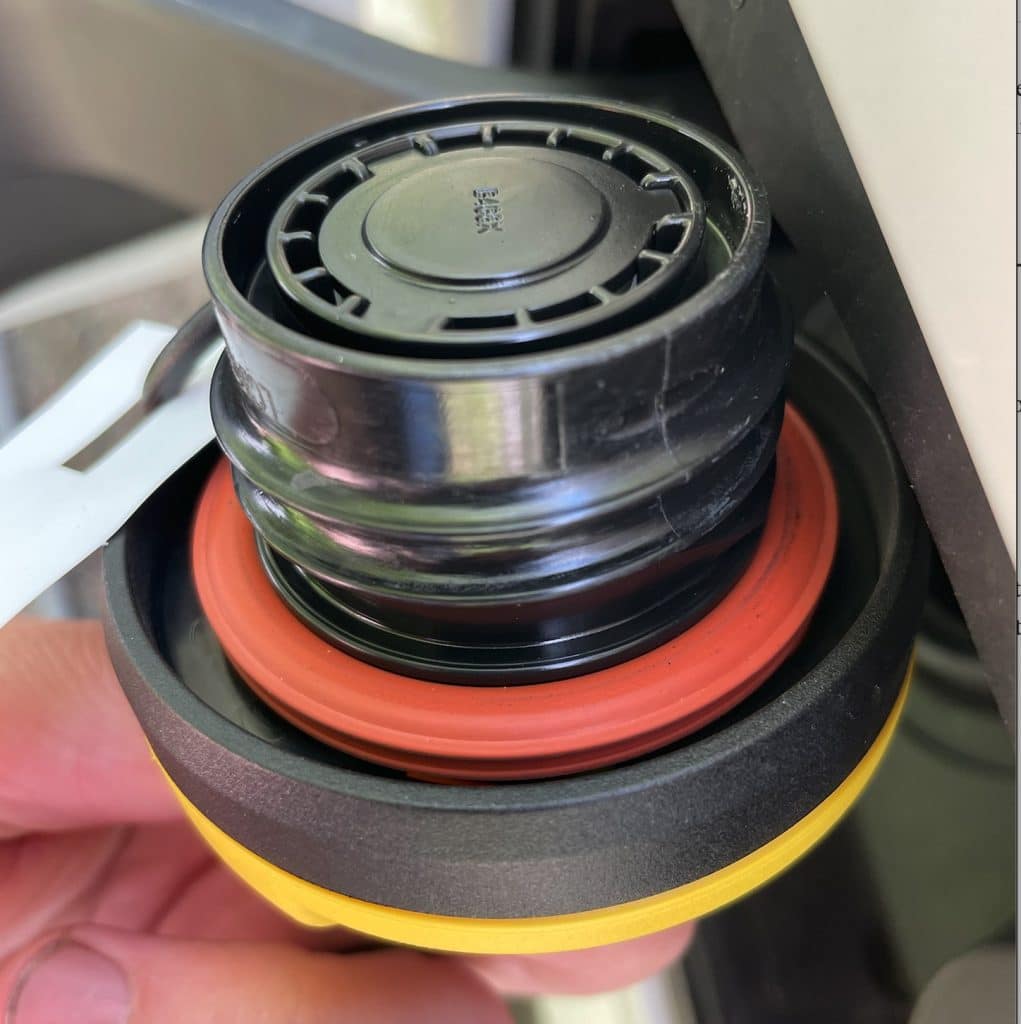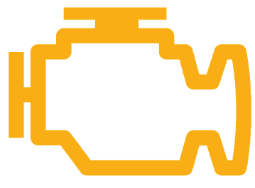Have you ever found yourself in a gas station, ready to fill up, only to realize your gas cap is missing?
It’s a common predicament that leaves many drivers wondering if they can hit the road without this seemingly small but important component.

While it’s technically possible to drive without a gas cap, it’s not recommended for several reasons. Driving without a gas cap can lead to decreased fuel efficiency, potential engine issues, and even environmental concerns.
Your trusty gas cap serves as a seal for your fuel system, keeping contaminants out and preventing fuel vapors from escaping.
You might think a missing gas cap is no big deal, but your car begs to differ.
That pesky check engine light? It might just be your vehicle’s way of saying, “Hey, where’s my hat?”
Plus, you could be failing emissions tests and burning a hole in your wallet with all that wasted fuel.
Key Takeaways
- Driving without a gas cap can reduce fuel efficiency and potentially damage your engine
- A missing gas cap may trigger your check engine light and cause you to fail emissions tests
- Replacing a lost gas cap is a simple and inexpensive solution to avoid these issues
Perils of Missing a Gas Cap
Driving without a gas cap might seem like no big deal, but it can lead to some serious headaches. Your wallet and your engine will both feel the pain if you let this seemingly small issue slide.
Fuel Evaporation and Efficiency Loss
Ever wonder why your fuel gauge drops faster than a lead balloon? A missing gas cap is like leaving the refrigerator door open – everything just evaporates away.
Your fuel economy takes a nosedive when you’re cruising capless.
Think about it: that little piece of plastic is all that stands between your precious petrol and the great outdoors. Without it, you’re basically pouring money straight onto the pavement.
Your car becomes a rolling piggy bank with a crack in it.
But it’s not just about the benjamins. Your engine might start acting like it’s had one too many oil martinis.
It’ll run rough, sputter, and maybe even stall. Talk about embarrassing at the stoplight!
Dirt and Debris in the Fuel Tank
Imagine your gas tank as a giant mouth, always hungry for fuel. Now picture it without its cap – it’s like eating dinner in a sandstorm.
Every bit of road grit, every speck of dust, and every wayward bug is getting an all-access pass to your fuel system.
This uninvited debris can clog up your fuel filter faster than you can say “check engine light.” And if that gunk makes it past the filter? Well, let’s just say your engine won’t be sending you a thank-you note.
You might start noticing your car sputtering like it’s trying to cough up a hairball.
That’s your engine’s way of saying, “Hey buddy, I’m choking on all this junk you let in!” It’s not a pleasant conversation to have with your mechanic, trust me.
Check Engine Light Drama

Driving without a gas cap can trigger some dashboard theatrics. Your vehicle might decide it’s time for an impromptu light show.
Understanding the Check Engine Light
That pesky check engine light loves to make an appearance when you forget your gas cap. It’s like your car’s way of saying, “Hey buddy, you forgot something!”
Most modern vehicles will illuminate this light within minutes of you driving off sans cap. It’s not trying to ruin your day – it’s just doing its job.
Some fancy rides even have a dedicated fuel cap light. Isn’t technology grand?
If you replace the cap and the light stays on, don’t panic. Your car might just need a moment to realize all is well in fuel cap land.
Possible Limp Mode Consequences
In some cases, your car might decide to throw a real tantrum and enter limp mode. It’s like your vehicle’s way of going on strike.
Limp mode restricts your car’s performance to protect the engine. You might notice:
- Reduced acceleration
- Lower top speed
- Rougher engine operation
It’s your car’s dramatic way of saying, “Fix me now!” Don’t ignore it. Limp mode isn’t just an inconvenience – it’s a safety feature.
Remember, a missing gas cap can mess with your fuel system’s pressure. Your engine might run less efficiently, kind of like you trying to jog while holding your breath.
Environmental Impacts of Driving Cap-Free
Cruising around without your gas cap might seem like no big deal, but it’s got some sneaky consequences for Mother Nature. Let’s pop the hood on this eco-unfriendly habit and see what’s really going on under there.
Unwanted Hydrocarbon Emissions
You might not see it, but your capless tank is letting out a secret stink. Those fuel vapors escaping aren’t just wasting your hard-earned cash – they’re also serving up a cocktail of hydrocarbons to the atmosphere.
Think of it like leaving the top off your soda bottle. The fizz escapes, and before you know it, you’ve got flat cola and a sad face.
Except in this case, it’s not just your drink going flat – it’s your car contributing to smog and air pollution.
Your vehicle’s emissions system is designed to keep these vapors in check. But without a cap, it’s like asking a goalie to defend the net with no stick. Not gonna happen, folks.
Contributing Factors to Air Pollution
You might think, “What’s a little gas vapor in the grand scheme of things?” Well, it adds up faster than your mechanic’s bill.
These escaped hydrocarbons are prime ingredients in the recipe for ground-level ozone – that nasty stuff that makes summer air quality alerts as common as backyard barbecues.
But wait, there’s more! Your capless wonder is also likely to fail emissions tests. That’s right, you could be cruising for a bureaucratic bruising next time inspection rolls around.
And let’s not forget – the more fuel you’re losing to the wind, the more you’ll need to pump. More fuel burned means more emissions overall.
It’s a vicious cycle that’s hard on your wallet and the planet.
Navigating to a Solution
Lost your gas cap? Don’t worry, you’re not alone in this predicament. Let’s explore how to get you back on track and keep your fuel system happy.
Seeking a Replacement Gas Cap
First things first, you’ll want to get that fuel cap replaced pronto.
Head to your local auto parts store – they’re like candy shops for car enthusiasts, but with fewer cavities.
Tell the clerk your car’s make, model, and year. They’ll help you find the right fit faster than you can say “octane rating.”
Pro tip: Bring your old cap if you still have it. It’s like showing a picture of your missing pet, but less emotional.
Remember, a universal cap might work in a pinch, but it’s not ideal long-term. It’s like wearing someone else’s shoes – they might fit, but they’re not made for your feet.
Maintaining Proper Fuel System Pressure
Now, let’s talk about keeping your fuel system as tight as your grandpa’s grip on his wallet. Proper pressure is key.
Without a gas cap, your fuel system loses pressure faster than a deflating balloon. This can lead to:
- Decreased fuel efficiency (goodbye, money!)
- Check engine light illumination (hello, anxiety!)
- Failed emissions tests (sayonara, clean air certificate!)
To maintain pressure, use a temporary solution if you can’t get a replacement immediately.
A clean rag or plastic wrap secured with a rubber band can work in a pinch.
But remember, this is like putting a band-aid on a leaky pipe. It’ll work for a short trip to the parts store, but don’t push your luck.
Cautions on Fuel Theft and Tampering
Ever left your gas cap off and thought, “Eh, what’s the worst that could happen?”
Well, buckle up, buttercup, because we’re about to take a wild ride through the world of fuel finagling!
First things first, leaving your fuel tank exposed is like rolling out the red carpet for thieves. Without that trusty cap, siphoning gas becomes a breeze. And in these days of sky-high fuel prices, your precious petrol might as well be liquid gold.
But wait, there’s more!
An open filler neck is basically an invitation for pranksters and ne’er-do-wells to dump all sorts of nasty surprises into your tank.
Sugar, water, or worse – suddenly your car’s drinking a cocktail that’d make even the toughest engine sputter.
Here’s a quick rundown of potential party crashers:
- Water: Turns your engine into a very expensive boat anchor
- Sugar: Despite urban legends, it won’t explode your engine, but it’ll clog things up nicely
- Dirt: Gives your fuel filter a workout it never asked for
So, next time you’re at the pump, remember: that little cap isn’t just a fashion accessory for your car. It’s the bouncer keeping the riffraff out of your fuel tank’s exclusive club. Keep it on, keep it tight, and keep those fuel thieves and tank tamperers at bay!
Frequently Asked Questions
Gas caps may seem simple, but they can raise some tricky questions. Let’s tackle some common head-scratchers about these little fuel guardians.
What’s the deal with driving a car minus its gas cap, any risks involved?
Driving without a gas cap isn’t ideal, but it’s not the end of the world. You might lose some fuel through evaporation, and your car could be less fuel-efficient. Plus, dirt and debris could sneak into your tank, potentially causing issues down the road.
Can a lost gas cap lead to my engine light throwing a tantrum?
You betcha! Your car’s computer is a stickler for details. A missing gas cap can trigger that pesky check engine light. It’s your car’s way of saying, “Hey, something’s not right here!”
Is there a one-size-fits-every-automo-chariot gas cap, or are we playing matchmaker?
Sorry, folks, but gas caps aren’t universal. Each car model often needs its own specific cap. It’s like finding the right dance partner – you need the perfect fit to avoid any missteps.
Where’s the best pit stop to snag a new gas cap when you’re on the run?
Your local auto parts store is your best bet. They usually stock a wide range of gas caps.
Many online retailers also offer replacements, but if you need one pronto, nothing beats a quick trip to the parts store.
In a pinch, what’s a makeshift gas cap that won’t leave you fuming?
While it’s not a long-term solution, you can use a rag or cloth as a temporary fix. Just make sure it’s snug and won’t fall into the tank.
Remember, this is just to get you to the parts store – don’t make it a permanent accessory!
What’s the skinny on gas caps and their role in keeping your fuel from waving goodbye?
Gas caps do more than just cover your tank.
They help maintain fuel quality by preventing contaminants from entering.
They also keep your fuel system pressurized, which is crucial for modern cars with evaporative emission control systems.
